News
News
Celebrating World Oceans Day 2025 webinar: India-Japan Regional Dialogue on Maritime Cooperation: Blue Economy, Digital Transformation & Marine Spatial Planning (MSP) in the Indian Ocean (detailed)
2025.07.07
About:
The Maritime Research Center, in collaboration with the Ocean Policy Research Institute the Sasakawa Peace Foundation (OPRI-SPF), Japan and Nirdhwani Technology Private Limited, held a webinar titled “India-Japan Regional Dialogue on Maritime Cooperation: Blue Economy, Digital Transformation & Marine Spatial Planning (MSP) in the Indian Ocean,” on the occasion of World Oceans Day 2025, on 08 June 2025. This webinar was designed to foster strategic cooperation between India and Japan in the Indian Ocean Region (IOR), with a specific focus on advancing a sustainable and inclusive blue economy. As two leading maritime nations in the Indo-Pacific, both countries are uniquely positioned to co-create frameworks that align ecological priorities with economic development, particularly through Marine Spatial Planning (MSP), digital innovation, and stakeholder empowerment. This webinar brought together experts and strategic thinkers from both India and Japan to deliberate on this crucial topic.
Background:
During this webinar, participants from India and Japan engaged in a comprehensive dialogue focused on enhancing strategic maritime cooperation in the Indian Ocean Region (IOR). As Indo-Pacific nations with deep-rooted maritime traditions, both countries have reaffirmed their shared commitment to upholding a free, open, inclusive, and rules-based maritime order. A key theme that emerged from the discussion was the growing importance of the blue economy as a central pillar for sustainable development and economic resilience. Given the mounting threats posed by climate change, regional instability, and fragmented resource management, the need for coordinated, technology-driven governance approaches was strongly emphasised.
One of the significant points of discussion that emerged from this webinar was the concept of “Oceans is the Mother of Life.” The programme highlighted the deep interconnection between human well-being and ocean health. The participants also described how our oceans, which cover 70% of the planet, are facing unprecedented challenges, including climate change, rising sea temperatures, marine pollution, plastic waste, overfishing, loss of biodiversity, maritime security threats, and geopolitical tensions. They also emphasised that safeguarding the oceanic ecosystem is not an option; it is a necessity. They reminded us of what is at stake and gave an inspiring call to collaborate across borders, sectors, and generations to protect our oceans– the true mother of all life. Another critical aspect of the oceans discussed during the webinar was the quote, “Whoever controls the Indian Ocean, controls Asia.” The participants also discussed the valuable perspective on the importance of the Indo-Pacific region and the shifts in its dynamics over the years. The ocean’s health is not something that the oceans have the liberty to maintain themselves; it is primarily maintained by the states that are dependent on its resources.
Japan’s leadership in maritime innovation and technology, combined with India’s geostrategic maritime presence and its extensive coastal and riverine communities, was highlighted as a unique synergy. The dialogue underlined that both nations are at a pivotal point where deepening collaboration—through joint platforms, continuous dialogue, and inclusive, community-focused frameworks—can lead to impactful solutions for shared maritime challenges.
Participants explored avenues to align national and regional priorities through Marine Spatial Planning (MSP), digital transformation, and blue economy initiatives. The conversation underscored the potential for India and Japan to co-develop strategies that integrate environmental sustainability with economic progress. Moreover, enhancing institutional collaboration and knowledge exchange was deemed critical for shaping effective policies and technological interventions in ocean governance. In essence, the webinar served as a stepping stone towards building a resilient and inclusive Indo-Pacific maritime future through joint action and shared vision.
What was the core objective of the webinar?
A core objective of the webinar was to explore opportunities for India-Japan collaboration in nurturing the blue economy across the Indian Ocean Region (IOR). The discussions highlighted Marine Spatial Planning (MSP) as a key strategic tool for promoting the sustainable, innovative, and equitable use of marine resources. Participants also stressed the importance of integrating digital transformation initiatives with community-level empowerment, particularly among coastal and riverine populations. In this context, the “100 Coastal/River Warriors” initiative was spotlighted as a forward-looking model. This program aims to build a digitally connected network of grassroots leaders equipped to support ocean data gathering, resource management, and inclusive decision-making processes.
Another key point of discussion was the potential to merge Japan’s advanced technological capabilities with India’s Underwater Domain Awareness (UDA) framework, developed by MRC. This collaboration could significantly enhance maritime security and governance across the region, providing a comprehensive approach to sustainable ocean management.
Key themes of the webinar:
Key themes included the convergence of strategic interests between India and Japan in the Indian Ocean, particularly in maritime security, resilience of Sea Lines of Communication (SLOCs), and the protection of critical trade routes. The Eastern Indian Ocean corridor, encompassing the Andaman and Nicobar Islands, holds strategic importance for both countries, providing opportunities for maritime infrastructure development, joint surveillance, and ecosystem-sensitive operations. As vital nodes within the Indo-Pacific maritime domain, these regions require sustainable and collaborative management.
These discussions were enriched by knowledge exchange on community-inclusive governance models, circular economy strategies, and nature-based solutions that enhance environmental resilience. Joint approaches to supporting Small Island Developing States (SIDS) in the Indian Ocean, such as those of the Maldives, Mauritius, and Seychelles, were also discussed and addressed during the webinar. These nations face unique vulnerabilities due to climate change and limited resources, and their inclusion in regional cooperation frameworks is essential for building adaptive and resilient marine governance systems.
Digital transformation for coastal empowerment was another critical focus area. Opportunities to deploy acoustic sensors, AI-enabled biodiversity tracking, and real-time ocean observation systems were also explored. The development of user-friendly mobile applications, cloud-based community portals, and localised decision-support tools will help bridge the gap between centralised authorities and grassroots stakeholders. These digital platforms can foster two-way communication, promote transparency, and enable participatory MSP processes. Emphasis was placed on democratising access to ocean data and enhancing the capacities of marginalised communities to engage meaningfully with ocean governance.
You can view the entire webinar using the following link- here.
The Maritime Research Center, in collaboration with the Ocean Policy Research Institute the Sasakawa Peace Foundation (OPRI-SPF), Japan and Nirdhwani Technology Private Limited, held a webinar titled “India-Japan Regional Dialogue on Maritime Cooperation: Blue Economy, Digital Transformation & Marine Spatial Planning (MSP) in the Indian Ocean,” on the occasion of World Oceans Day 2025, on 08 June 2025. This webinar was designed to foster strategic cooperation between India and Japan in the Indian Ocean Region (IOR), with a specific focus on advancing a sustainable and inclusive blue economy. As two leading maritime nations in the Indo-Pacific, both countries are uniquely positioned to co-create frameworks that align ecological priorities with economic development, particularly through Marine Spatial Planning (MSP), digital innovation, and stakeholder empowerment. This webinar brought together experts and strategic thinkers from both India and Japan to deliberate on this crucial topic.
Background:
During this webinar, participants from India and Japan engaged in a comprehensive dialogue focused on enhancing strategic maritime cooperation in the Indian Ocean Region (IOR). As Indo-Pacific nations with deep-rooted maritime traditions, both countries have reaffirmed their shared commitment to upholding a free, open, inclusive, and rules-based maritime order. A key theme that emerged from the discussion was the growing importance of the blue economy as a central pillar for sustainable development and economic resilience. Given the mounting threats posed by climate change, regional instability, and fragmented resource management, the need for coordinated, technology-driven governance approaches was strongly emphasised.
One of the significant points of discussion that emerged from this webinar was the concept of “Oceans is the Mother of Life.” The programme highlighted the deep interconnection between human well-being and ocean health. The participants also described how our oceans, which cover 70% of the planet, are facing unprecedented challenges, including climate change, rising sea temperatures, marine pollution, plastic waste, overfishing, loss of biodiversity, maritime security threats, and geopolitical tensions. They also emphasised that safeguarding the oceanic ecosystem is not an option; it is a necessity. They reminded us of what is at stake and gave an inspiring call to collaborate across borders, sectors, and generations to protect our oceans– the true mother of all life. Another critical aspect of the oceans discussed during the webinar was the quote, “Whoever controls the Indian Ocean, controls Asia.” The participants also discussed the valuable perspective on the importance of the Indo-Pacific region and the shifts in its dynamics over the years. The ocean’s health is not something that the oceans have the liberty to maintain themselves; it is primarily maintained by the states that are dependent on its resources.
Japan’s leadership in maritime innovation and technology, combined with India’s geostrategic maritime presence and its extensive coastal and riverine communities, was highlighted as a unique synergy. The dialogue underlined that both nations are at a pivotal point where deepening collaboration—through joint platforms, continuous dialogue, and inclusive, community-focused frameworks—can lead to impactful solutions for shared maritime challenges.
Participants explored avenues to align national and regional priorities through Marine Spatial Planning (MSP), digital transformation, and blue economy initiatives. The conversation underscored the potential for India and Japan to co-develop strategies that integrate environmental sustainability with economic progress. Moreover, enhancing institutional collaboration and knowledge exchange was deemed critical for shaping effective policies and technological interventions in ocean governance. In essence, the webinar served as a stepping stone towards building a resilient and inclusive Indo-Pacific maritime future through joint action and shared vision.
What was the core objective of the webinar?
A core objective of the webinar was to explore opportunities for India-Japan collaboration in nurturing the blue economy across the Indian Ocean Region (IOR). The discussions highlighted Marine Spatial Planning (MSP) as a key strategic tool for promoting the sustainable, innovative, and equitable use of marine resources. Participants also stressed the importance of integrating digital transformation initiatives with community-level empowerment, particularly among coastal and riverine populations. In this context, the “100 Coastal/River Warriors” initiative was spotlighted as a forward-looking model. This program aims to build a digitally connected network of grassroots leaders equipped to support ocean data gathering, resource management, and inclusive decision-making processes.
Another key point of discussion was the potential to merge Japan’s advanced technological capabilities with India’s Underwater Domain Awareness (UDA) framework, developed by MRC. This collaboration could significantly enhance maritime security and governance across the region, providing a comprehensive approach to sustainable ocean management.
Key themes of the webinar:
Key themes included the convergence of strategic interests between India and Japan in the Indian Ocean, particularly in maritime security, resilience of Sea Lines of Communication (SLOCs), and the protection of critical trade routes. The Eastern Indian Ocean corridor, encompassing the Andaman and Nicobar Islands, holds strategic importance for both countries, providing opportunities for maritime infrastructure development, joint surveillance, and ecosystem-sensitive operations. As vital nodes within the Indo-Pacific maritime domain, these regions require sustainable and collaborative management.
These discussions were enriched by knowledge exchange on community-inclusive governance models, circular economy strategies, and nature-based solutions that enhance environmental resilience. Joint approaches to supporting Small Island Developing States (SIDS) in the Indian Ocean, such as those of the Maldives, Mauritius, and Seychelles, were also discussed and addressed during the webinar. These nations face unique vulnerabilities due to climate change and limited resources, and their inclusion in regional cooperation frameworks is essential for building adaptive and resilient marine governance systems.
Digital transformation for coastal empowerment was another critical focus area. Opportunities to deploy acoustic sensors, AI-enabled biodiversity tracking, and real-time ocean observation systems were also explored. The development of user-friendly mobile applications, cloud-based community portals, and localised decision-support tools will help bridge the gap between centralised authorities and grassroots stakeholders. These digital platforms can foster two-way communication, promote transparency, and enable participatory MSP processes. Emphasis was placed on democratising access to ocean data and enhancing the capacities of marginalised communities to engage meaningfully with ocean governance.
You can view the entire webinar using the following link- here.
Videos of our speakers
Please find below the video presentations/keynote addresses by our speaker:
Please find below the video presentations/keynote addresses by our speaker:
| Speaker | Image | Video |
|---|---|---|
| Dr (Cdr.) Arnab Das, Founder and Director of the MRC | 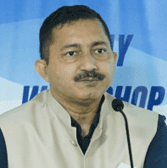 |
Link here |
| Ambassador Anup Kumar Mudgal, Member, FICCI’s Blue Economy Task Force | 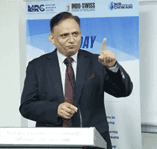 |
Link here |
| Dr. Emadul Islam (Nayan), Ocean Policy Research Institute at the Sasakawa Peace Foundation, Japan |  |
Link here |
| Dr. Mengyao Zhu, Ocean Policy Research Institute at the Sasakawa Peace Foundation, Japan |  |
Link here |
| Prof Shankari Sundararaman, Centre for Indo-Pacific Studies, School of International Studies, JNU, Delhi |  |
Link here |
| Shri Praful Talera, MRC’s Advisor on Blue Economy |  |
Link here |
| Cathrine J, Head of Publications and Research, MRC | 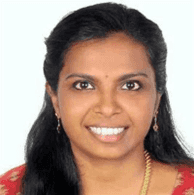 |
Link here |
Image Gallery
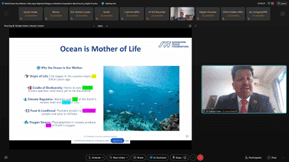
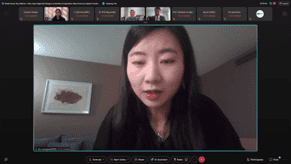
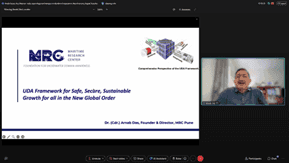

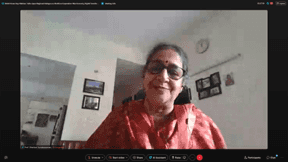

Enclosure
Underwater Domain Awareness (UDA) Framework
Dr (Cdr) Arnab Das
The concept of Underwater Domain Awareness (UDA), in a more specific sense, translates to our eagerness to know what is happening in the underwater realm of our maritime areas and the freshwater systems. This keenness for underwater awareness from the security perspective means defending our Sea Lines of Communication (SLOC), coastal waters, and varied maritime assets against the proliferation of submarines and mine capabilities intended to limit access to the seas and littoral waters. The freshwater systems, particularly the transboundary Rivers, are not defended by the Navy & the Coast Guard, but these waters are equally vulnerable and more complex to manage. However, military requirements may not be the only motivation for generating underwater domain awareness. The earth’s underwater geophysical activities have a lot of relevance to the well-being of humankind, and monitoring them could provide vital clues to minimize the impact of devastating natural calamities. The commercial activities in the underwater realm need precise inputs on the availability of resources to effectively and efficiently explore and exploit them for economic gains. Underwater resources include fisheries, aquaculture, seaweeds, pharma ingredients, minerals, and others with significant market value. The regulators, on the other hand, need to know the pattern of exploitation to manage a sustainable plan. The connectivity through the water bodies has been recognized as the most effective and efficient mode of transportation, however, ensuring navigability in these water bodies requires a massive amount of UDA. With so many commercial and military activities, there is a significant impact on the environment. Any conservation initiative needs to precisely estimate the habitat degradation and species vulnerability caused by these activities and assess the ecosystem status and climate change risk. The scientific and research community needs to engage and continuously update our knowledge and access of the multiple aspects of the underwater domain. The global community is looking at the Indo-Pacific strategic space for their geopolitical and geostrategic engagements. The Indo-Pacific region, by definition, is the tropical waters of the Indian and Pacific Oceans. The tropical waters present unique challenges and opportunities regarding rich biodiversity and resource availability. However, the sub-optimal sonar performance is the biggest issue, limiting the UDA in these regions. The sonars that were designed for the temperate & polar waters of the Greenland, Iceland, United Kingdom (GIUK) gap during the Cold War era suffered 60% degradation when deployed in tropical waters. The developing nations in tropical waters need to customize these technologies to suit their conditions. The Western nations that are pushing this hardware do not have the manpower to deploy it. In contrast, the tropical nations, have the manpower but lack the appreciation of the technology and the know-how. The proposed UDA Framework, presented in the figure below, can optimize resource deployment and provide nuanced policy and technology intervention, along with acoustic capacity & capability building to manage the tropical challenges and opportunities. There is significant fragmentation among all four stakeholders, namely Strategic Security, Blue Economy, Sustainability & Climate Change Risk Management, and Science & Technology (Digital Transformation), and the UDA framework provides a comprehensive way forward for the stakeholders to engage and interact.
Dr (Cdr) Arnab Das

Figure. Comprehensive Perspective of the UDA Framework
On a comprehensive scale, the UDA Framework needs to be understood in terms of its horizontal and vertical construct. The horizontal construct would be the resource availability in terms of technology, infrastructure, capability, and capacity specific to the stakeholders or otherwise. The stakeholders represented by the four faces of the cube will have their specific requirements, however, the core will remain the acoustic capacity and capability. The vertical construct is the hierarchy of establishing a comprehensive UDA. The first level, or the ground level, would be the sensing of the underwater domain for threats, resources, and activities. The second level would be making sense of the data generated to plan security, conservation, and resource utilization strategies. The next level would be to formulate and monitor regulatory framework at the local, national, and global levels. The individual cubes represent specific aspects that need to be addressed. The ‘User-Academia-Industry’ partnership can be seamlessly formulated based on the user requirement, academic inputs, and the industry interface represented by the specific cube. It will enable a more focused approach and a well-defined interactive framework. Given the appropriate impetus, the UDA Framework can address multiple challenges being faced by the global community today. Meaningful engagement of the young and aspirational population is probably the most critical aspect that deserves attention. Multi-disciplinary and multi-functional entities can interact and contribute to synergize their efforts towards a larger goal seamlessly.
The UDA Framework is a structured, comprehensive, and inclusive framework to drive the underwater domain effectively and efficiently. The structured approach will minimize the fragmentation among the stakeholders, regional players, national authorities, and local bodies. The multiple entities will have divergent interests and priorities, thus, converging them into one single and focused governance mechanism will be a challenge. The governance mechanism must be comprehensive and recognize all dimensions of the stakeholder requirement. The dimensions include varied layers that are instrumental in building a strong governance mechanism. The first layer would be five pillars: research, skilling, academia, innovation, and policy. The second layer is its translation into policy & technology intervention, along with acoustic capacity & capability building. The inclusive aspects include varied socio-economic, socio-political, and socio-cultural native groups in the larger governance framework. The varied socio-economic strata of the society, particularly the coastal & riverine communities, get excluded from the conventional development models. The students need to prepare for real-world challenges and get very late before they get exposed to the nuances of real-world issues. The political spectrum is always driven by the social structure, based on left or right leanings. The governance mechanism has to address the concerns and aspirations of both sides. The cultural divide translates to the traditional practices and beliefs that drive their livelihoods and social structure. The governance mechanism has to address these divides and integrate everyone into one national, regional, or global framework.
The global community is also professing the triad of people, economy, and nature for enhanced governance mechanisms. The people component includes the livelihood, well-being of the native communities, social dynamics, and more. The economic component is the growth and prosperity associated with the activities. The nature component addresses sustainability and climate change risk management. This is also measured in terms of the Environmental, Social, and Governance (ESG) formulation. The UDA Framework is consciously addressing all these varied measures of global good parameters.
UDA Framework: Copyright: © Underwater Domain Awareness- Framework (under the copyright license). All Rights Reserved
The UDA Framework is a structured, comprehensive, and inclusive framework to drive the underwater domain effectively and efficiently. The structured approach will minimize the fragmentation among the stakeholders, regional players, national authorities, and local bodies. The multiple entities will have divergent interests and priorities, thus, converging them into one single and focused governance mechanism will be a challenge. The governance mechanism must be comprehensive and recognize all dimensions of the stakeholder requirement. The dimensions include varied layers that are instrumental in building a strong governance mechanism. The first layer would be five pillars: research, skilling, academia, innovation, and policy. The second layer is its translation into policy & technology intervention, along with acoustic capacity & capability building. The inclusive aspects include varied socio-economic, socio-political, and socio-cultural native groups in the larger governance framework. The varied socio-economic strata of the society, particularly the coastal & riverine communities, get excluded from the conventional development models. The students need to prepare for real-world challenges and get very late before they get exposed to the nuances of real-world issues. The political spectrum is always driven by the social structure, based on left or right leanings. The governance mechanism has to address the concerns and aspirations of both sides. The cultural divide translates to the traditional practices and beliefs that drive their livelihoods and social structure. The governance mechanism has to address these divides and integrate everyone into one national, regional, or global framework.
The global community is also professing the triad of people, economy, and nature for enhanced governance mechanisms. The people component includes the livelihood, well-being of the native communities, social dynamics, and more. The economic component is the growth and prosperity associated with the activities. The nature component addresses sustainability and climate change risk management. This is also measured in terms of the Environmental, Social, and Governance (ESG) formulation. The UDA Framework is consciously addressing all these varied measures of global good parameters.
UDA Framework: Copyright: © Underwater Domain Awareness- Framework (under the copyright license). All Rights Reserved
Some important links have been mentioned below for your kind reference:
- MRC website: https://maritimeresearchcenter.com/
- UDA Foundation website: https://udafoundation.in/
- NDT website: https://nirdhwani.in/
- Our latest Newsletter (Q2-2025): Link here
- UDA Digest: Link here
- UDA Knowledge Center: Link here